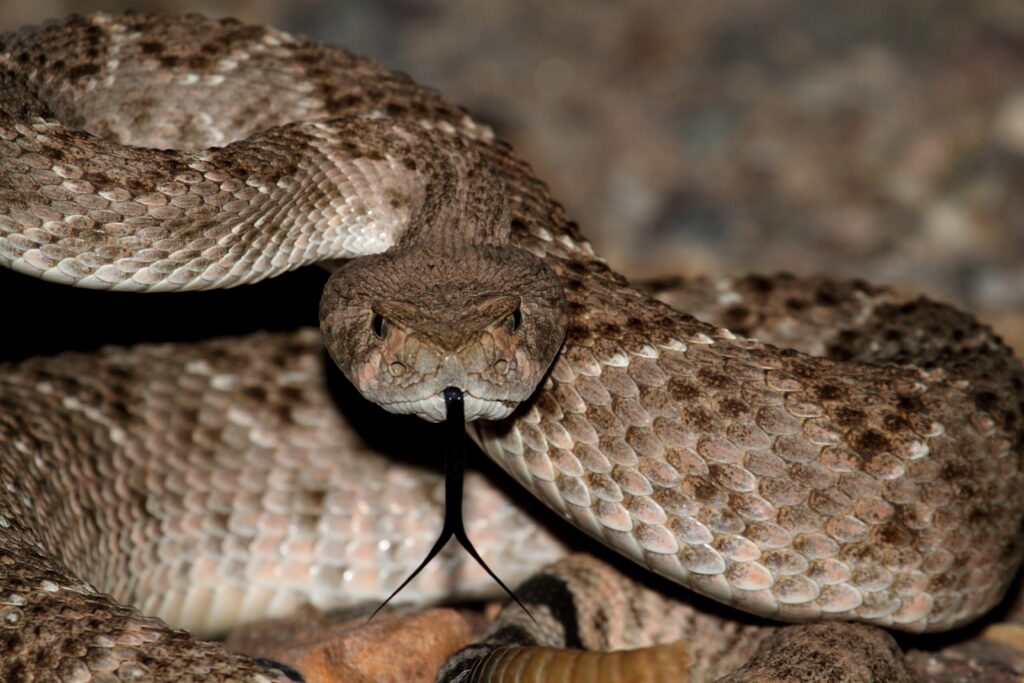
Most people know about rattlesnakes, but not many people think about how they’re born, how many are born at the same time, and what happens after they are born. So, do baby rattlesnakes stay together?
Here’s what I’ve noticed:
Baby rattlesnakes stay close to their siblings from seven to ten days after birth. But after their first shed, they leave the nest and the others from their den and become solo hunters.
Other snakes don’t stay with their mothers at all; rattlesnakes only stick together because they’re ovoviviparous (meaning they give live births).
But why do they stick together, as opposed to other snakes that lay the eggs and then slither off, abandoning their young to the harsh environment like sea turtles?
Rattlesnake Births
Unsurprisingly, birthing for mother rattlesnakes is a lot harder than it is for non-rattlesnakes.
Many snakes are oviparous, meaning they lay eggs like most reptiles. They lay the eggs, sometimes they hang around and coil around them to keep them warm enough until they hatch, and then they slither off.
But this is not the case for rattlers.
Rattlesnakes are ovoviviparous, which means that they give live births, which make them (and a few other species, such as garter snakes, rinkhals, and copperheads) different from many other snake species. Although, funnily enough, it makes them similar to sharks, as most shark species are ovoviviparous as well.
Ovoviviparous species give live birth, but humans aren’t ovoviviparous.
So, what’s the difference? Well, ovoviviparous animals still create fully formed eggs and they incubate those eggs until they’re ready to hatch, like most egg-laying species do.
The difference is, the mothers keep the eggs inside of her until they’re ready to hatch. The baby rattlers hatch inside her body, and then she gives birth to them. But sadly, not all will survive.
Rattlesnakes give birth after one hundred and sixty-seven days of incubating the eggs themselves.
The mothers will even put themselves in environments that are more exposed to predators because they need to get enough sunlight to properly incubate their babies.
Rattlesnakes give birth to an average of ten little rattlers at once, although some species (like the Western Diamondback Rattlesnake) give birth to twenty. (Because there just aren’t enough rattlesnakes crawling around the Midwest.)
Fun Fact: A group of rattlesnakes is called a rhumba!
When rattlesnakes give birth, it’s a whole slew of eggs at once, called a clutch. Synchronous hatching is actually very important. It’s the same reason girls go off to the bathroom in pairs or groups. Safety in numbers.
Girls (and baby rattlesnakes) are safer from predators when there’s a whole group of them, as opposed to one all on their own. And when the baby rattlesnakes are born, they span from six to twelve inches in length. Think long worms.
So while rattlesnakes and humans both give live birth, the methods are actually very different. Humans aren’t ovoviviparous; in fact, we’re viviparous (development of an embryo inside the body of a parent).
However, despite the differences, mothers of both species are actually very protective of their young.
Many snakes don’t stick around much together, but mother rattlesnakes stay with their young for seven to ten days until all their babies shed their skin and leave the nest for good. They do this mainly for protection as the baby rattlers learn about the world around them and figure out how to get around.
Why Do Baby Rattlesnakes Only Stay With Their Mother 1 Week?
The young rattlesnakes, once they shed for the first time, leave their mother and go off on their own.
The first week with their mother is like the baby rattler’s training wheels. They still are going off and doing their own thing, but they keep returning to the central location for protection and safety. But after the first week, the training wheels come off and they disappear into the night—vanishing without a trace.
Why do they do this?
Well, it’s in their nature. Unlike wolves, most snakes prefer to go it alone (and in this case, rattlesnakes are no exception). The “lone wolf” term really works better when applied to snakes. Rattlesnakes hunt alone, so if you come upon one of them in the wild, don’t worry. There’s a high chance that it’s the only one you’ll encounter.
There aren’t going to be ten other rattlesnakes flanking you, waiting to get in a hit.
Snakes are solitary animals. It’s probably because their hunting style requires stealth. Snakes are known for being slippery and sneaky—hence the term “snake-like.”
People are like snakes when they’re cunning, quick, and undetected for their suspicious actions. Snakes aren’t pack-hunters…they track their prey, slithering around in complete silence until the perfect moment to attack. And if more snakes get involved in one hunt, it would become less calculated and more sloppy.
When snakes hunt, they track their prey based on smell and body temperature. They flick their tongues out as a way to “smell” their prey. And like the Indominus Rex from “Jurassic World,” they can also sense body heat.
Despite their solitary nature, snakes aren’t as lonely as we might think. According to a study analyzed by National Geographic, garter snakes actually actively seek out companionship with snakes of the same sex, so the bonds being formed aren’t even for reproductive purposes.
Similar conclusions have been made about rattlesnakes, some people claiming that rattlers can recognize their mother and siblings years after they were born, but there’s yet to be scientific evidence that actually proves it. Still, it’s interesting to think about.
And the fact that the mother stays with her babies after birth (unlike other snakes) proves that rattlesnakes aren’t as angsty and lonely as they might seem.
Do Different Species of Rattlesnakes Stay With Their Mother Longer?
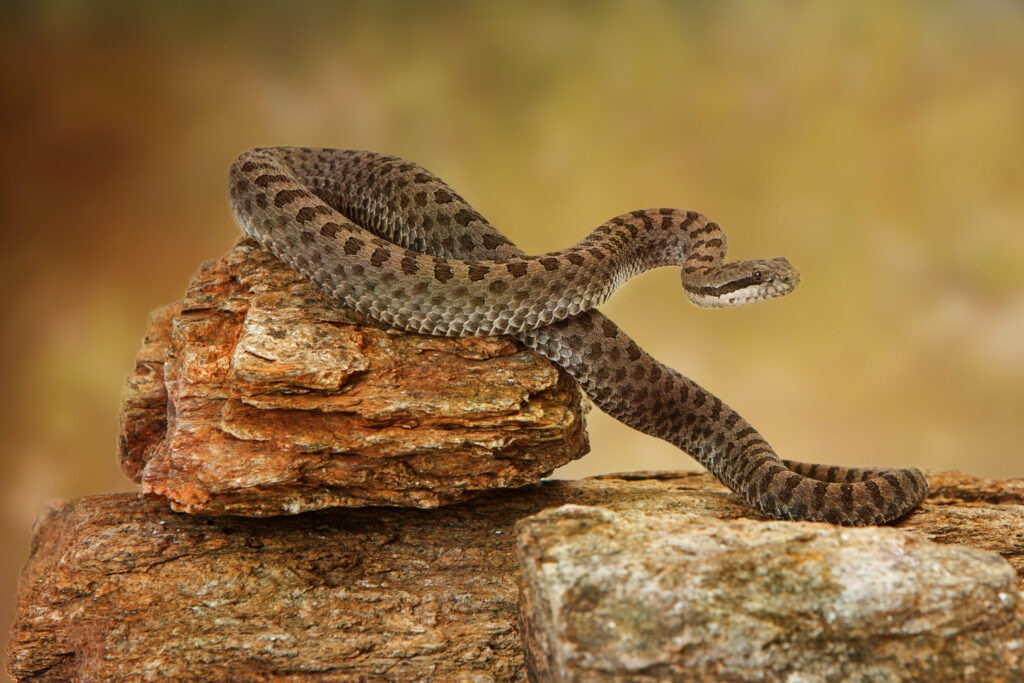
So how does this information hold up with different species of rattlesnakes? Do they all follow these same patterns, or are there exceptions?
Generally speaking, yes, they all give birth the same way and they watch over their babies until after the first shed. The real differences between species depend on their different personalities and how many baby rattlesnakes they give birth to at once.
Timber rattlesnakes can have five to thirteen babies, whereas other species like the Western Diamondback can pop out twenty to twenty-five at once.
It’s not surprising that different species of rattlesnakes look different, but you might be surprised to learn that different rattlesnake species have different personalities. We’re not sure exactly why this is but think of it like different dog breeds. Poodles and German shepherds don’t act the same, and they probably never will.
Same with rattlesnakes. Timber rattlesnakes (which live in a territory all the way from east Texas to north Florida, and all the way up to southern New Hampshire) are extremely passive and slow. They generally like to stay under the radar and don’t even rattle at threats unless they’ve been repeatedly disturbed over and over again.
Western Diamondback rattlesnakes are like the Timber rattlesnake’s angry cousin.
They’re not slow, and they’re definitely not passive. Western Diamondbacks are extremely aggressive and excitable; ready to strike at all times. And according to animaldiversity.org, Western Diamondbacks cause more fatalities than any other snake in the entire United States. They don’t attack offensively, but they can and WILL defend themselves at the drop of a hat.
And unfortunately, most rattlesnakes are about as aggressive as Western Diamondbacks. Timber rattlers are in the minority.
So, when you find yourself crossing the path of a rattlesnake, take our advice and get out of there. Back away slowly, and when you are far enough away, run! And if you can’t get away quickly enough, read this article on how to PROPERLY handle a rattlesnake bite.
Do Adult Rattlesnakes Ever Stick Together?
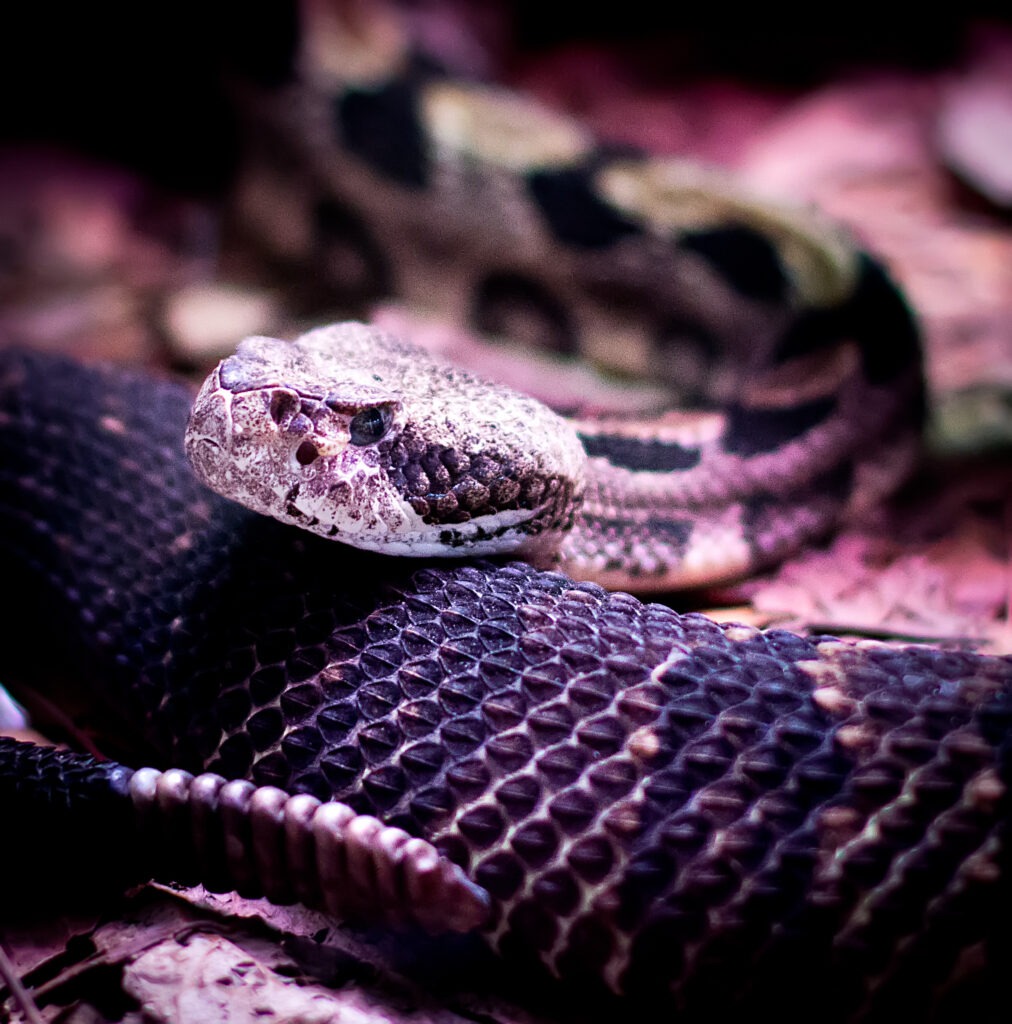
Like mentioned previously, rattlesnakes generally go off on their own and stay alone for the majority of their adult lives, aside from mating and after they give birth (if they give birth).
But, rattlesnakes are cold-blooded, and when the winter months hit, they get hit hard.
Rattlesnakes don’t actually hibernate, but they do something very similar. They brumate in order to get through the cold. Brumation is similar to hibernation, but unlike hibernation, the dormancy isn’t nearly as deep or as long.
Brumation is specific for reptiles, where the reptiles sleep with the same inactivity as animals in hibernation. If the weather gets good enough, they might wake up and move around a bit, hunting if they can.
When this happens, the rattlesnakes’ den in a safe place while they wait out of the winter.
And some species of rattlesnakes (like Timber rattlesnakes) den together for brumation, likely to keep their overall body temperatures up and also for protection. Some rumors are going around that rattlesnakes can (and will) find their mothers and other siblings to brumate with during the winter, but there’s yet to be actual evidence found by herpetologists in the field that supports this theory.
Baby VS. Adult Rattlesnakes
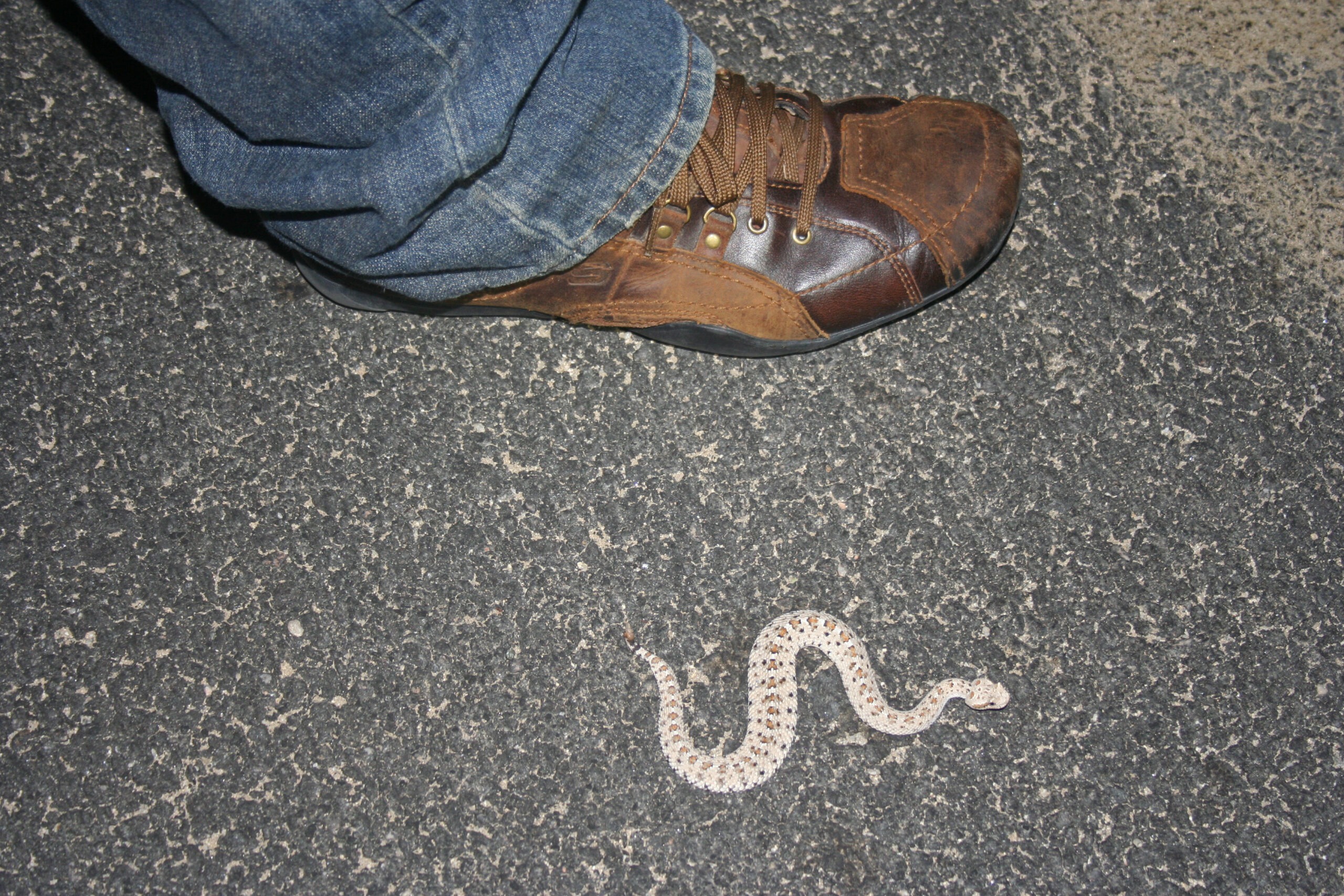
We’ve talked a lot about baby and adult rattlesnakes in this article. You might have the misfortune of happening upon a rattlesnake in the wild, and if you do, it’s good to know the differences between the babies and adults. There are pros and cons to running into either.
Rattlesnakes don’t fully mature until they reach a certain age of sexual maturity.
Generally speaking, males become sexually mature at four to six years, and females mature at seven to thirteen years old, although that can vary from species to species. And up until that point, a baby rattlesnake will be slowly growing from their length of ten inches to the full-size length of three to five feet.
The size of adult rattlesnakes varies a lot depending on the species.
Eastern Diamondback rattlesnakes can weigh up to ten pounds, while some adult rattlesnakes will be only two to three pounds. But despite the huge range of weight, it’s really easy to tell the difference between an adult and a baby based on weight.
Even if the adult snake is only two and a half pounds, the body will be thick and muscular. Both babies and adults have a big, triangular-shaped head that is wider than the rest of the body, but babies look more like little strings with bobbleheads than actual snakes.
But they are real snakes, and they pose different threats than adult rattlesnakes.
Adult rattlesnakes are big, agile, and they can strike from up to two-thirds of their own body length (so a five-foot snake can strike targets that are over three feet away). Baby rattlers can’t do that, but they are tiny and virtually unnoticeable until after they’ve sunk their fangs into your ankle.
Some people claim that baby rattlesnakes are more dangerous than adult rattlesnakes because they release more venom, but that myth has been recently debunked by experts.
Baby rattlesnake venom has a different composition than adult rattlesnake venom, which does make baby venom more toxic, but they release far less of it.
Most experts agree that adult bites are more dangerous, but when it comes right down to it, it doesn’t matter which bite is more dangerous; baby rattlesnake bites can kill you just as easily as adult bites if you don’t get the proper care and attention.
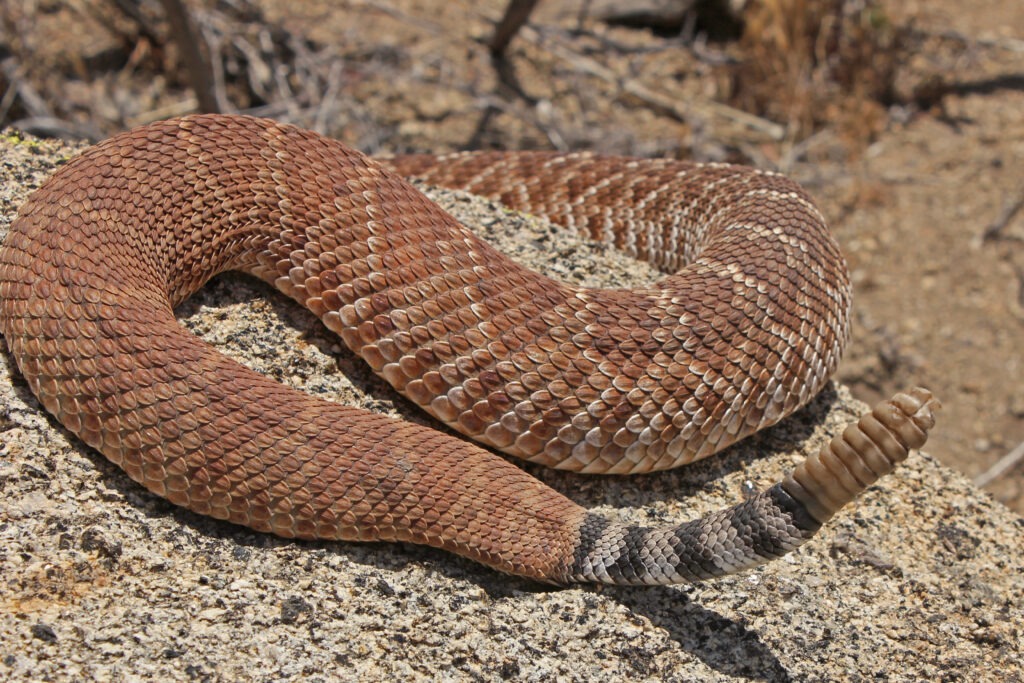
The real “danger” with baby rattlesnakes is the fact that they are so tiny and unnoticeable, and they barely have a rattle.
Adults will shake their rattle, making the classic shk-shk-shk sound before they lunge to give you ample warning. But rattlesnakes form their rattles as they grow up. Each time they shed, they are building up another layer of the rattle.
So babies don’t have much of a rattle, and you get little to no warning before they get you.
Some people try to tell the age of a rattlesnake from the number of rattles, but rattlesnakes can shed from one to four times a year, so it’s not really an accurate way to tell the age.
You just have to remember that babies don’t have rattles, so if you’re planning on taking a long walk or hike somewhere with rattlesnakes, wear close-toed shoes. And make sure you have cell service so you can call 911. Just in case.
